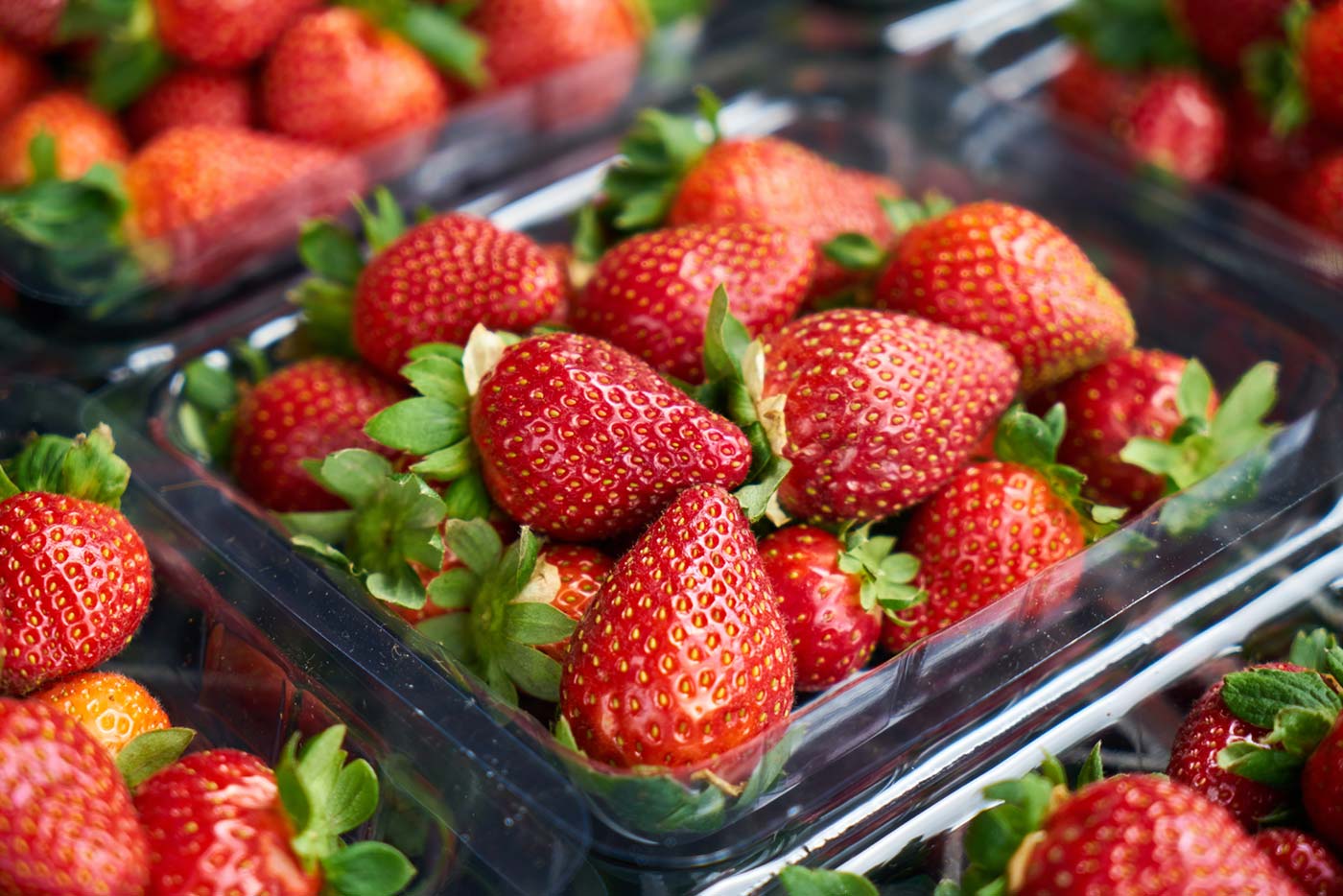Spring Recipes: Strawberries + Arugula
STRAWBERRIES
Strawberries are native to North America and Indigenous peoples used them in many dishes. The berries are strewn among the leaves of the plant so the plant first had the name strewberry, which later was changed to strawberry. Early Americans did not bother cultivating strawberries because they were so abundant in the wild. Cultivation began in earnest in the early part of the 19th century when strawberries with cream became considered a luxurious dessert. Today, strawberries are grown in every U.S. state and throughout most of the world. These berries pack a potent punch—protecting one’s heart, increasing HDL (good) cholesterol, lowering blood pressure and guarding against cancer. Packed with vitamins, fiber and particularly high levels of antioxidants known as polyphenols, strawberries are a sodium-free, fat-free, cholesterol-free, lowcalorie food.
The disadvantage of strawberries is that they are often treated with pesticides. The Environmental Working Group (EWG) produces a list of fruits and vegetables with the highest levels of pesticide residue, known as the “Dirty Dozen,” and strawberries rank high up on this list so look for ones grown locally and in season. The strawberry was a symbol for Venus, the Goddess of Love, because of its heart shapes and red color. Legend has it that if you break a double strawberry in half and share it, you will fall in love with each other.
ARUGULA
Arugula has historically been a staple ingredient in Italian cuisine yet was relatively unknown to American eaters until the 1990s. Today arugula often appears in spring salad mixes, but actually it is a member of the cabbage and mustard green family. This explains its signature peppery bite, prized by both professional chefs and home cooks.
Young leaves of arugula have a mild, sweetish taste, while older leaves have a peppery, slightly nutty flavor. It is used not only in salads but also in pasta, pizzas, soups, stews and sandwiches to add a layer of taste. Also known as rocket, arugula can be found yearround but is in peak season from spring to early summer.
Like many salad greens, much of the arugula grown in the U.S. comes from California and Arizona, where producers rely heavily on irrigation and chemical inputs. For these reasons, arugula should always be carefully washed in water before consumption. Given the high environmental costs of producing and shipping arugula, buying it locally and in season whenever possible is the best option. Arugula provides a good source of vitamins A and C — powerful antioxidants and help to maintain a healthy immune system. Vitamin A is also responsible for cell growth, healthy vision and helping to maintain kidney, lung and heart function.
In ancient Roman, arugula was primarily used as a medicinal herb and aphrodisiac. The ancient Roman poet Virgil even sang its praises, saying “the rocket excites the sexual desires of drowsy people.” Later, in the Middle Ages, it was forbidden from being grown in the monastic gardens of the Roman Catholic Church for that same reason. Today that science is unclear and expectations should probably be taken with a dash of salt.









